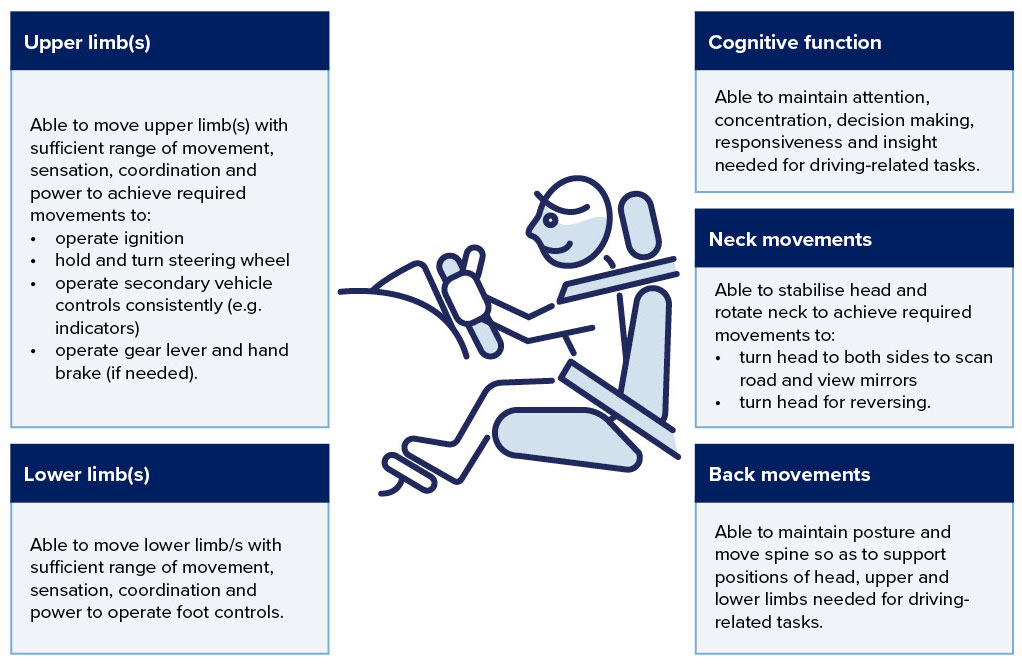5.1 Relevance to the driving task
5.1.1 Effects of musculoskeletal conditions on driving
To safely operate a motor a vehicle, drivers must be able to execute and coordinate many complex muscular movements requiring adequate range of movement, sensation, coordination and power of the upper and lower limbs (refer Figure 12):
- The upper limbs are required to steer and to operate gears/transmission and secondary vehicle controls.
- The lower limbs are required to operate the foot controls.
- The ability to rotate the head is important for scanning the environment including when reversing.
- General postural stability and endurance is also required.
- Entering and leaving the vehicle also requires a degree of strength and flexibility.
There is a close link between these requirements and the cognitive and decision- making requirements of the driving task.
Specific requirements will vary depending on the vehicle and the driving task. Commercial vehicles vary considerably in terms of cabin access and design, vehicle controls and ergonomics, and the commercial driving task can be physically demanding in terms of the vehicle operation as well as the duration of driving. The needs of motorcyclists also differ due to the type of controls and the overall driving task, as well as requirements for balance and agility.
The features of modern vehicles, such as digital controls, reversing cameras, automatic transmission, power steering and adjustable seats, accommodate a range of impairments. Adaptive equipment can also be installed (e.g. hand-operated controls) that enable many drivers with impairments to operate vehicles safely (refer to Table 6).
Chronic impairment of musculoskeletal functions may arise from numerous disorders and trauma (e.g. amputations, arthritis, ankylosis, deformities and chronic lower back pain). Issues related to muscle tone, spasm, sitting tolerance and endurance, as well as the effects of medications, may also need to be considered (refer to Part A section 2.2.9. Drugs and driving).
Acute and chronic pain associated with musculoskeletal conditions may also impact the cognitive aspects of driving, with evidence that it affects attention and concentration, as well as emotional responses. This is an important consideration for the overall management of drivers with musculoskeletal conditions (refer to section 5.2. General assessment and management guidelines).
It is possible to drive safely with quite severe functional impairment; however, driver insight into functional limitations, stability of the condition and compensatory body movements or vehicle devices to overcome deficits are usually required (refer to section 5.2. General assessment and management guidelines).
Figure 12: General functional requirements for driving motor vehicles (excluding motorcycles)

5.1.2 Evidence of crash risk
There is limited published data on the risk of a crash or loss of control of a vehicle due to musculoskeletal disorders. While several studies describe driving difficulties experienced by people with physical impairment affecting the musculoskeletal system, the evidence suggests there is only a slightly increased risk of crash associated with these disorders. This may be attributed to the driver’s ability to compensate for physical impairments while driving or, as for various other conditions, it may be due to self-limiting of driving by people with these conditions.
See reference 1.
